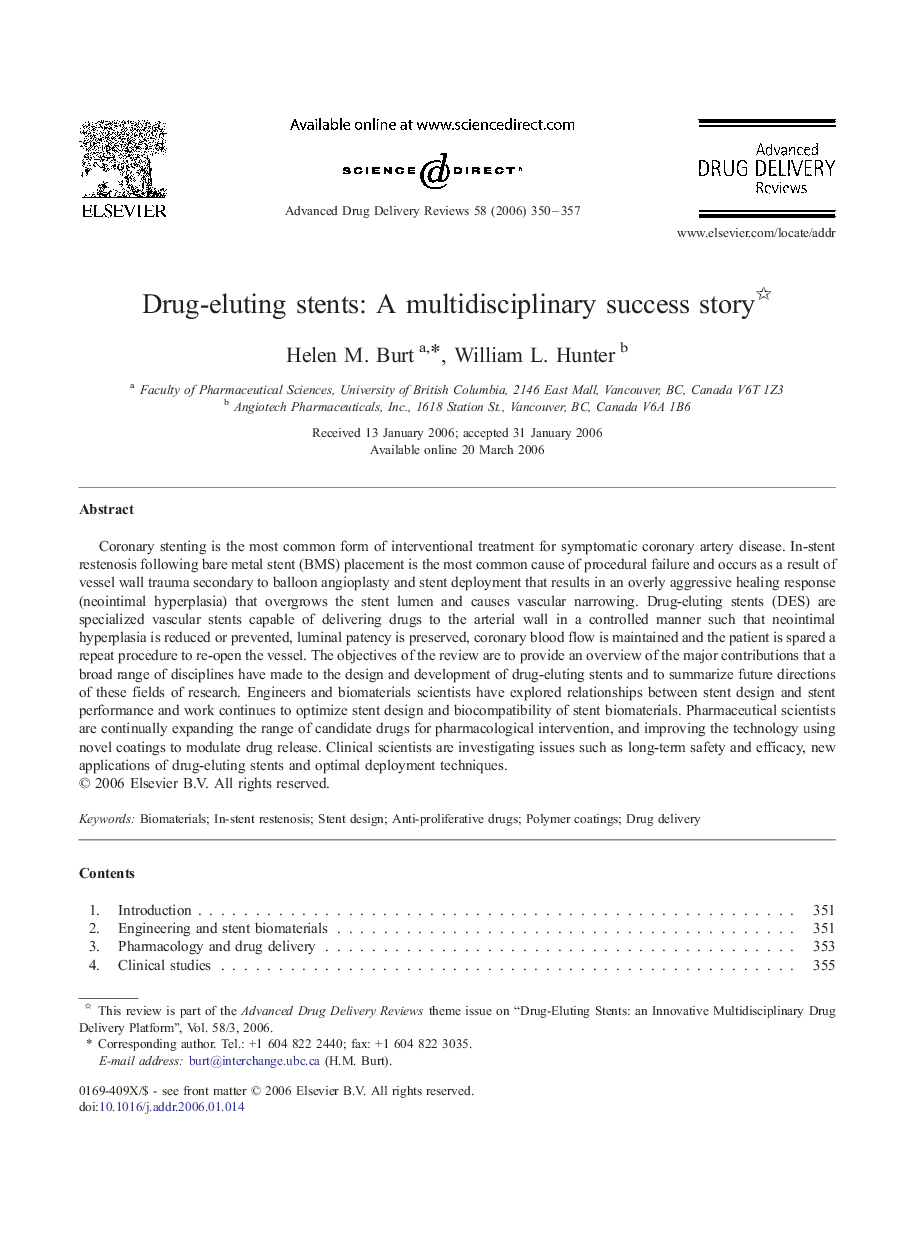| Article ID | Journal | Published Year | Pages | File Type |
|---|---|---|---|---|
| 2072070 | Advanced Drug Delivery Reviews | 2006 | 8 Pages |
Coronary stenting is the most common form of interventional treatment for symptomatic coronary artery disease. In-stent restenosis following bare metal stent (BMS) placement is the most common cause of procedural failure and occurs as a result of vessel wall trauma secondary to balloon angioplasty and stent deployment that results in an overly aggressive healing response (neointimal hyperplasia) that overgrows the stent lumen and causes vascular narrowing. Drug-eluting stents (DES) are specialized vascular stents capable of delivering drugs to the arterial wall in a controlled manner such that neointimal hyperplasia is reduced or prevented, luminal patency is preserved, coronary blood flow is maintained and the patient is spared a repeat procedure to re-open the vessel. The objectives of the review are to provide an overview of the major contributions that a broad range of disciplines have made to the design and development of drug-eluting stents and to summarize future directions of these fields of research. Engineers and biomaterials scientists have explored relationships between stent design and stent performance and work continues to optimize stent design and biocompatibility of stent biomaterials. Pharmaceutical scientists are continually expanding the range of candidate drugs for pharmacological intervention, and improving the technology using novel coatings to modulate drug release. Clinical scientists are investigating issues such as long-term safety and efficacy, new applications of drug-eluting stents and optimal deployment techniques.
